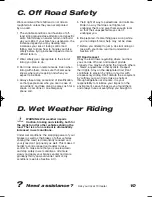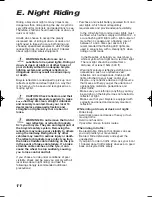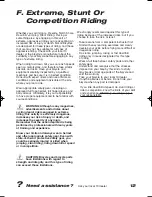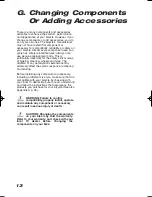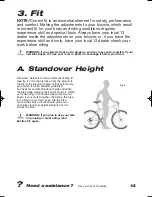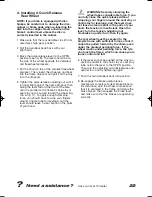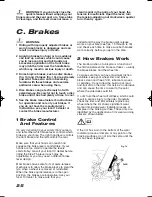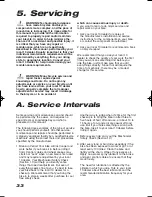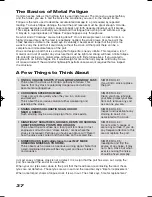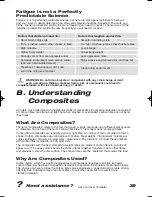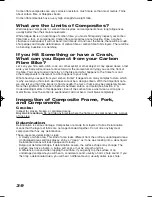
?
Need assistance?
Ask your
local 13 dealer
24
B. Seat Post Quick Release
e. Chain Tension
Single Speed Cycles
1 Finger tighten both axle nuts. Pull the wheel
backwards, ensuring that it is centralized and
that there is approximately 12mm (1/2”) of play
in the chain. Check the play at the mid point of
the chain between the chain ring and the
rear sprocket.
2 Use a spanner on each nut simultaneously to
fully tighten the nuts.
3 Turn the cranks through at least one full
revolution and check that eccentricity does
not cause the chain to become too taut at
any point.
f. Chain Tension
Hub Geared Cycles
1 This bike is fitted with an eccentric bottom
bracket. If the chain tension needs adjustment,
loosen the two pinch bolts at the bottom
bracket and rotate it until there is approximately
12mm (1/2") of play in the chain. Check the
play at the mid point of the chain ring and the
rear sprocket. Ensure that the two pinch bolts
are securely tightened to lock the bottom
bracket in position.
2 Turn the cranks through at least one full
revolution and check that eccentricity does
not cause the chain to become too taut at
any point.
Some bikes are equipped with a quick-release
seat post binder. The seat post quick-release
binder works exactly like the wheel quick-release
(Section 4.A.1) While a quick release looks like a
long bolt with a lever on one end and a nut on the
other, the quick release uses a cam action to
firmly clamp the seat post (see fig. 8).
WARNING: Riding with an improperly
tightened seat post can allow the
saddle to turn or move and cause you to lose
control and fall. Therefore:
1 Ask your local 13 dealer to help you make
sure you know how to correctly
clamp your seat post.
2 Understand and apply the correct
technique for clamping your seat post
quick release.
3 Before you ride the bike, first check that
the seat post is securely clamped.
Adjusting The Seat Post Quick
Release Mechanism
The action of the quick release cam squeezes
the seat collar around the seat post to hold the
seat post securely in place. The amount of
clamping force is controlled by the tension-
adjusting nut. Turning the tension-adjusting nut
clockwise while keeping the cam lever from
rotating increases clamping force; turning it
anticlockwise while keeping the cam lever from
rotating reduces clamping force. Less than half a
turn of the tension-adjusting nut can make the
difference between safe and unsafe clamping
force.
WARNING: The full force of the cam
action is needed to clamp the seat
post securely. Holding the nut with one hand
and turning the lever like a wing nut with the
other hand until everything is as tight as you
can get it will not clamp the seat post safely.
Fig. 13
Bolt-on Rear Wheel
in Dropouts
13
owners manual GENERIC A5 aw
05/05/14
10:25 Page 26

